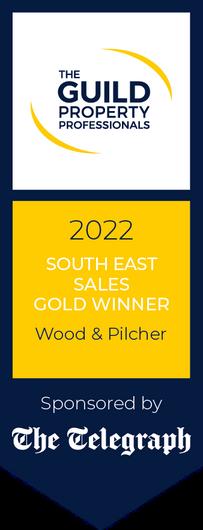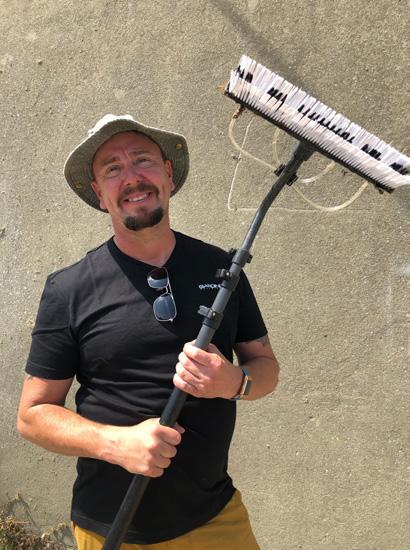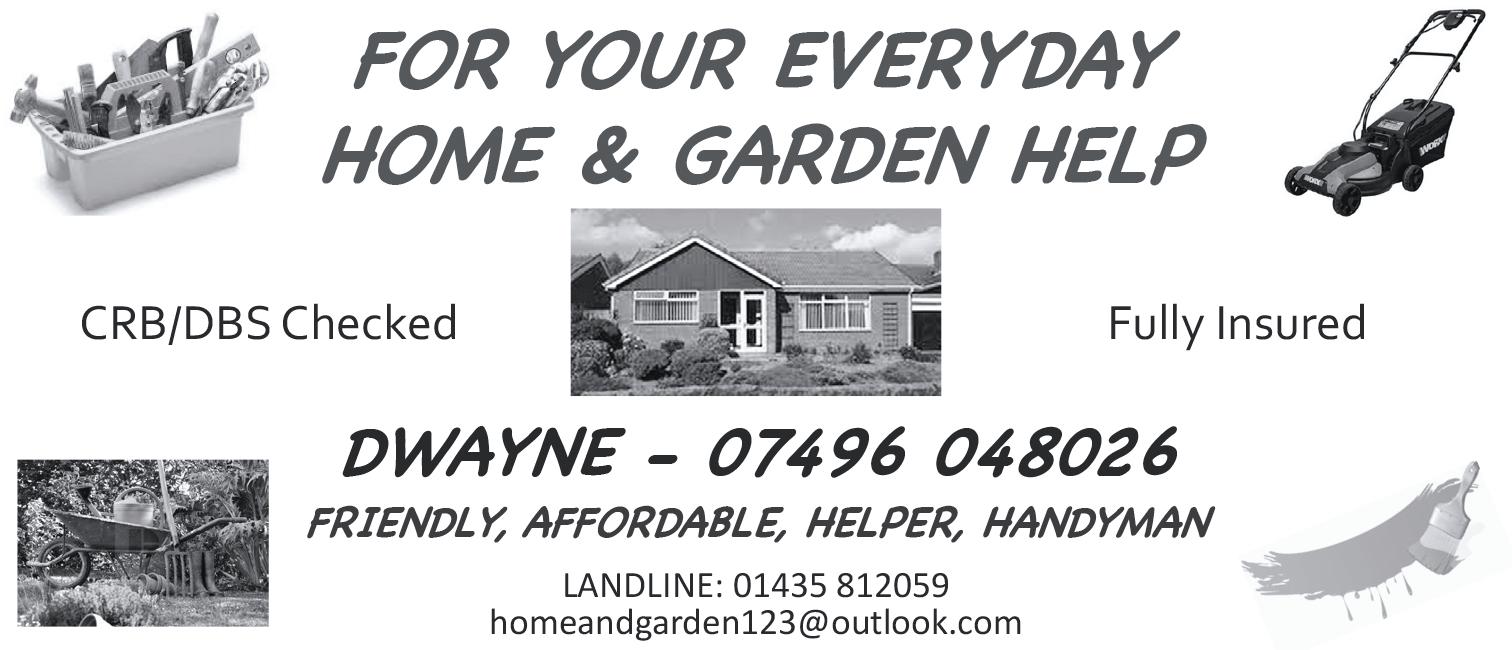
5 minute read
NEIGHBOURHOOD PLAN UPDATE
Since the exhibition/consultation in October last year we have been busy putting your thoughts and ideas into our Neighbourhood Plan.
Due to the local elections necessitating a pause, our next consultation, when we ask for your comments on a full first draft of the Neighbourhood plan, will now take place in late Spring early Summer. This is called Regulation 14.
Advertisement
We will again be launching it in the Village Hall and have a statutory 6-week consultation period to capture your feedback.
Our local elections are on 4th May. The pre-election period starts on 20th March and during the period immediately before elections there are specific restrictions in place on communications activity, including developing new policies and holding of events featuring elected officials.
Shown below is a reminder of the stages we must go through to make a Neighbourhood Plan:
√1 Initial consultation to identify issues, concerns, objectives, and areas of focus for the Neighbourhood Plan. COMPLETED
√2 Collection of ‘evidence’ on the issues and potential options, ideas, and strategies to be progressed through the Plan. COMPLETED
√3
Production of and consultation on emerging policy ideas. COMPLETED
4 Drafting of and formal consultation on the Neighbourhood Plan (known as the Regulation 14 Stage). WHERE WE ARE NOW
5 Updating the Plan in response to consultation, submitting it to the District Council, which must arrange a further, final round of consultation (known as Regulation 16 Stage)
6. Testing of the Plan through an independent examination process.
7. Subjecting the Neighbourhood Plan to a local referendum.
8. Adopting (‘making’) the Neighbourhood Plan as a policy document – if more than 50% of people that turn out vote ‘yes’ at the referendum.
The Neighbourhood Plan page of the Parish Council website (www.horam.com) contains the objectives, a summary of feedback from the exhibition and questionnaire survey last October, as well as two useful reports – on Design and Local Housing Needs - that have been prepared for us.
The consultation period on the draft Plan will be widely publicised in due course, so we can ensure it represents the views of local people as much as possible.
Sue Lane
Neighbourhood Plan Steering Group Co-Ordinator.



Whiplash Injury
A sprain of the soft tissues of the neck when they become stretched and damaged. It is common after a car accident when the neck is forcefully thrown forwards, backward, or sideways; the extreme flexion of the neck then whips back in the other direction. It can also occur from a blow to the head during sport or an assault. The cervical spine, or neck, is designed to be flexible and is less protected than the rest of the spine, which leaves it more vulnerable to injury.
Anatomy: The neck consists of 7 cervical vertebrae; the first 2, the atlas, and the axis are shaped differently from the remaining five and allow movement of the skull from side to side, backward, and forward. Between each vertebra are a disc and a nerve exiting from the spine. The neck has many complex muscles and ligaments to allow movement and support. The anterior longitudinal ligament, running along the front of the spine is often injured during whiplash.
Symptoms: Common symptoms include pain, tenderness, discomfort, and stiffness in the neck area with limited mobility; swelling, muscle spasms, headaches, and pain in the shoulders, arms, jaw, and lower back. Less common symptoms include pins and needles, numbness or weakness in the arms and hands, tiredness, dizziness, insomnia, poor concentration, memory loss, and irritability. Symptoms may become worse a few hours to a few days later. You will need to seek urgent medical attention if you have more severe symptoms such as blurred vision, nausea, ringing in the ears or difficulty breathing.
Causes: Common causes include road traffic accidents and collisions, a blow to the head by a heavy object, during sports or an assault, a slip or fall where the head is jolted backward, head-banging, a roller coaster ride, and bungee jumping. The over-extension and recoil damage ligaments and tendons in the neck. You are more at risk if you are a woman because your neck muscles are often less developed, an athlete, particularly in high-risk sports, you have poor posture or congenital spinal problems; also, if your car head restraints are badly fitted. Complications are more likely if you are over 65, have immediate pain after the injury, have nerve damage or numbness, or are unable to walk or sit down.
Diagnosis: You will need to see your doctor if you have pain and stiffness in the neck, numbness or tingling following a road traffic accident, or impact to the head. The doctor with examine your neck for the range of movement, swelling, tenderness, and damage to muscles, ligaments, and discs, and may also test your reflexes. X-rays, MRI, or a CT scan may be required to rule out more serious injuries, such as a fracture, spinal cord compression, or nerve injury.
Treatment: Self-help includes using ice packs to reduce pain and swelling, heat packs to soothe muscle pain, maintaining a good posture, especially at the computer, avoiding sitting or lying down for long periods, sleeping on your front, or using more than one pillow, a supportive pillow may be helpful. Whiplash is thought to get better on its own in a few weeks or months or after some basic treatment; keeping your neck mobile and continuing with normal activities, specific exercises, and stretches, taking paracetamol or ibuprofen painkillers or something stronger from your doctor if needed. You may be referred to a specialist or pain clinic if the pain persists for a long time.
Osteopathic/Manual Management: Take a detailed case history to understand the nature of the problem and surrounding issues. Examine the neck, shoulders, arms, jaw, and spine and all surrounding tissues; muscles, ligaments, nerves, fascia, etc., for movement, strength, and functionality and assess nerve pathways. Consider the effect of the force of impact on the whole body. Perform orthopaedic and neurological tests. Treat to reduce muscle tension, nerve irritation, and soft tissue pain. Advice regarding specific exercises and stretching the neck and shoulders. Treatment may include manipulation, deep soft tissue massage, trigger point therapy, muscle energy techniques, fascial techniques, dry needling, etc.
A simple exercise to help relieve your neck: https://www.youtube.com/watch?v=H2_ scF42GqU&t=5s
We are happy to advise you on your health matters.
Lin Bridgeford DO KFRP MICAK MICRA FSCCO MCMA MSc
Registered Osteopath & Kinesiologist & Senior Yoga Teacher
Master Hypnosis and NLP Practitioner and Trainer
Aether Bios Clinic, Saltdean, 01273 309557 07710 227038 www.osteo-info.co.uk YouTube search Aether Bios OR Lin Bridgeford Instagram linbridgeford https://linbridgeford.wordpress.com contains all my articles as blogs



Window Cleaning

LET US GIVE YOU SQUEAKY CLEAN WINDOWS WITH OUR PURE WATER SYSTEM.
We can clean all of the below up to 60ft.
Windows, solar panels, fascias, soffits & conservatories.
For a free no obligation quotation call or email us today!
DBS Checked and approved.
Telephone Jason 01435 408048 ~ 07739 039944
Email: ascleaning@live.co.uk
ORCHARD FRAMING www.orchardframing.co.uk
ORCHARD FRAMING BESPOKE FRAMERS
UNIT 4, MERRYDOWN BUSINESS PARK, DISCOVERY WAY, HORAM
( entrance opposite the village hall ) 01435 812075
All framing requirements covered, off the shelf frames and mounts.
Email: info@orchardframing.co.uk Closed Monday.
Tuesday to Friday 9am - 5pm and Saturday 9am - 1pm* 01435 812075











